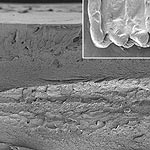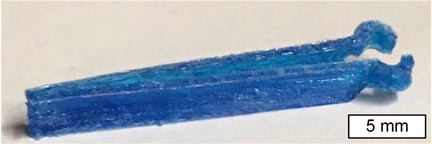3D Printing with Plants
 Mar-08-17
Researchers at MIT have created a 3D printing process that uses cellulose as an alternative to petroleum-based materials.
Mar-08-17
Researchers at MIT have created a 3D printing process that uses cellulose as an alternative to petroleum-based materials.The printing process involves using cellulose acetate, which can be dissolved in acetone for ejection through the printer nozzle. The acetone evaporates quickly, and the hydrogen bonds of the remaining structure are solidified via a sodium hydroxide treatment. The result is a structure stronger than those made using typical 3D printing materials.
To demonstrate the new technology, the team printed a pair of tweezers embedded with microbial properties.
Thumbnail image: A scanning electron microscope image of a cross-section of an object printed using cellulose. The inset shows the surface of the object

More Info about this Invention:
[NEWATLAS.COM][NEWS.MIT.EDU]

Add Your Comment